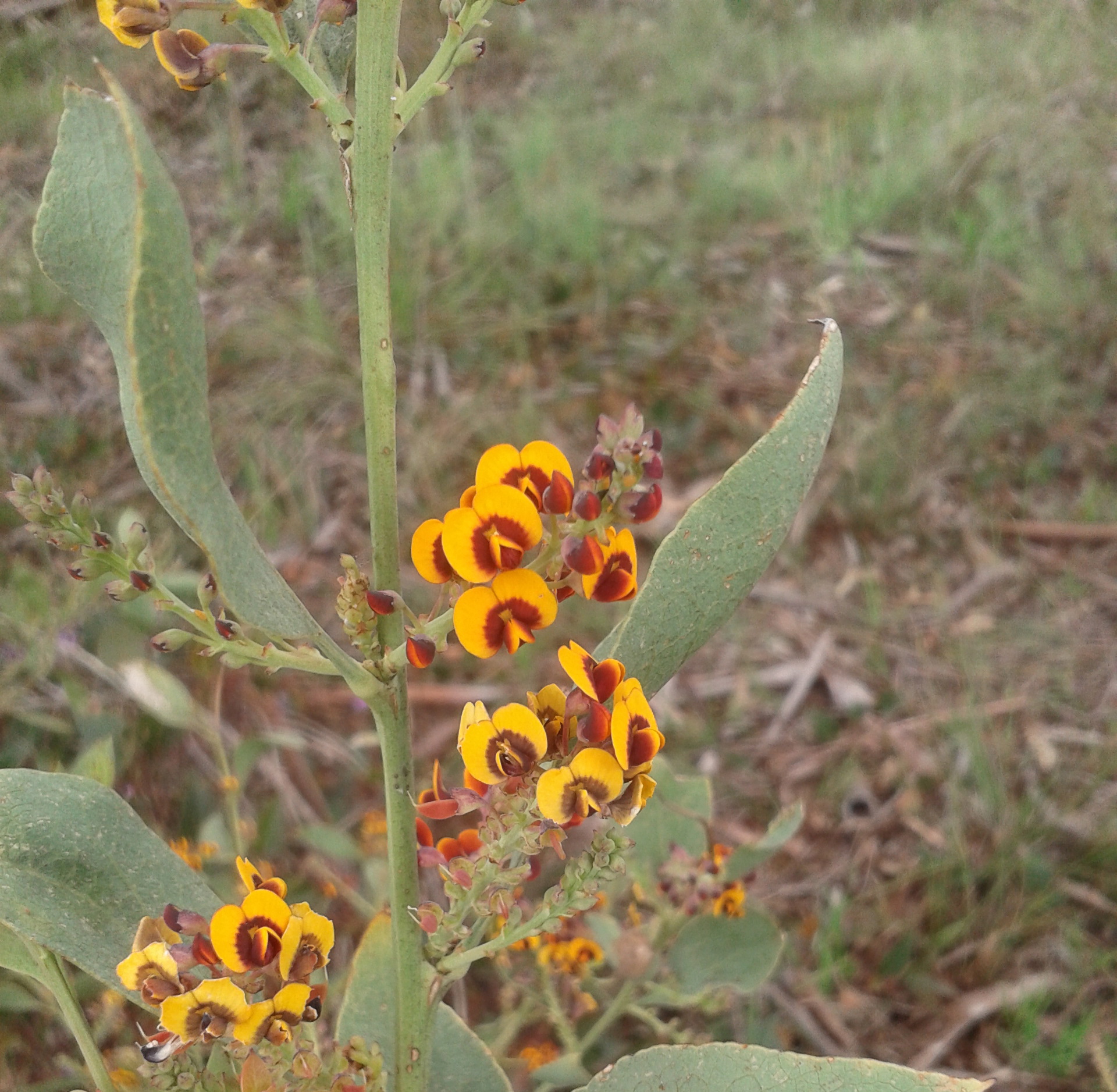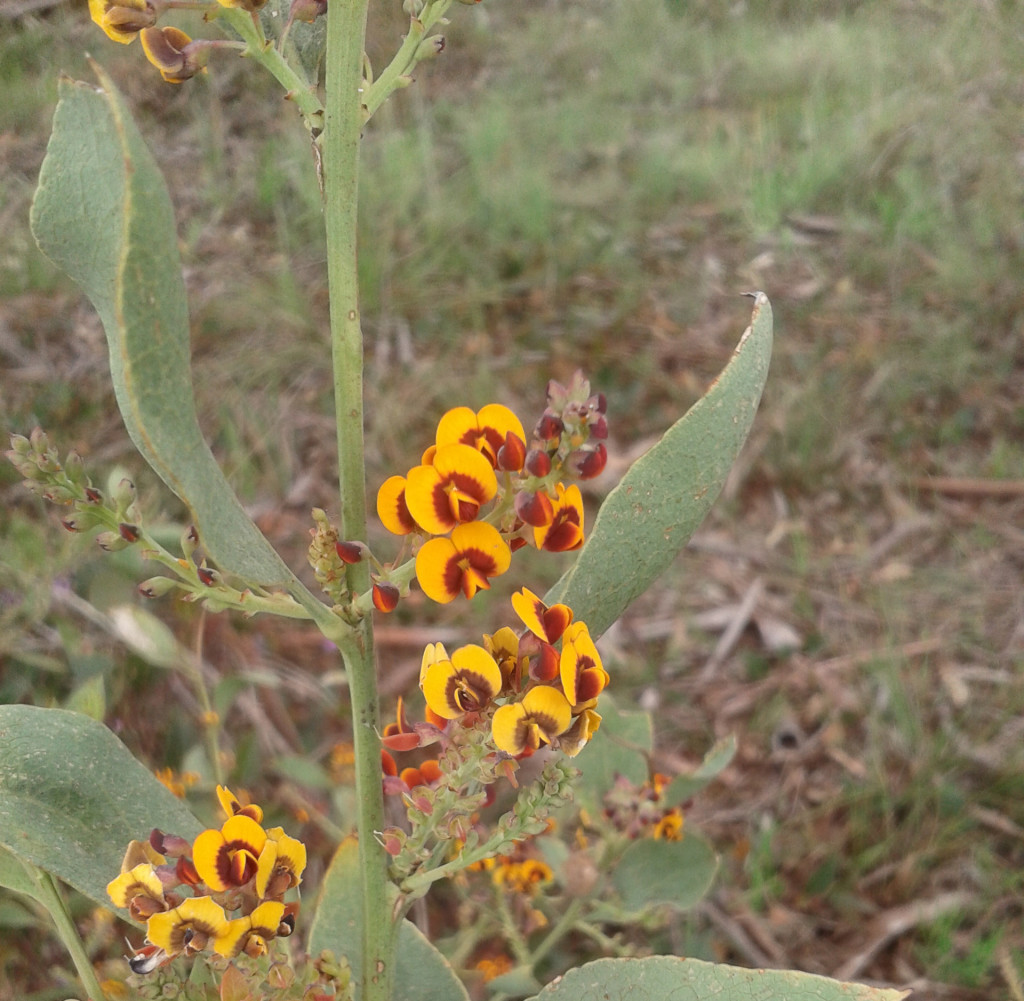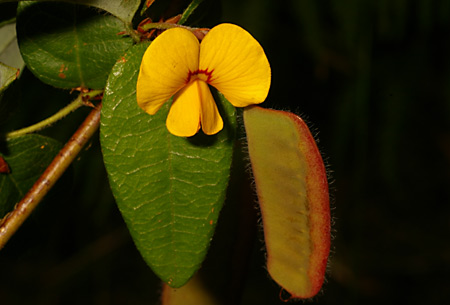Description
Common names
Handsome Flat-pea, Flat Pea, Handsome Flat-pea.
Scientific names
Platylobium formosum.
Family
Fabaceae.
Genus
Platylobium.
Name origin
Platylobium, from Greek platys, flat, and lobos, pod, referring to flat pods. Formosum, from Latin formosus, beautiful.
Rainfall
600mm+.
Growth rate
Fast.
Growth height
Up to 2.5m.
Presence in Australia
Widespread, in most areas of the region.
This specie has been identified in the following Australian states: Qld, NSW, ACT, Vic, Tas.
Habitat
Various habitats, from heath to rainforest margins.
Habit
Erect, straggling or prostrate shrub, to 2.5m high. Green leaves 1-6.5cm long.
Site preference
Moist well-drained soil in semi-shade. Tolerates frost and drought.
Characteristics
Very variable in leaf shape, leaf size, flowers and pods.
Flowering
Yellow and red, spring to early summer.
Seed collection
Mid to late Dec. Monitor closely as seeds shed immediately or very soon after maturity. Ensure collection by securing nylon stockings or paper bags to fruiting branches after flowering.
Propagation
From scarified seed (which may be difficult to germinate); from cuttings of young growth, or layered stems. Pour boiling or very hot water over seeds and soak until water cools. Dry to prevent rotting and sow. Germination takes 3-4 weeks. Suitable for direct seeding in pots (2-3 seeds per pot). Add local soil to potting mix to introduce beneficial micro-organisms, and enhance success.
Regeneration
From seed, particularly after fire.
Shade and shelter
Useful low-level cover in windbreaks. Important component of understorey.
Land protection
Legume - improves soil fertility through "fixing" nitrogen.
Wildlife
Good habitat. Native bees, wasps and butterflies pollinate flowers. Parrots, including the Red-rumped Parrot and Turquoise Parrot, and finches eat seeds.
Ornamental
Highly attractive ornamental for gardens and embankments, particularly when flowering.
Other
Very adaptable in cultivation.




